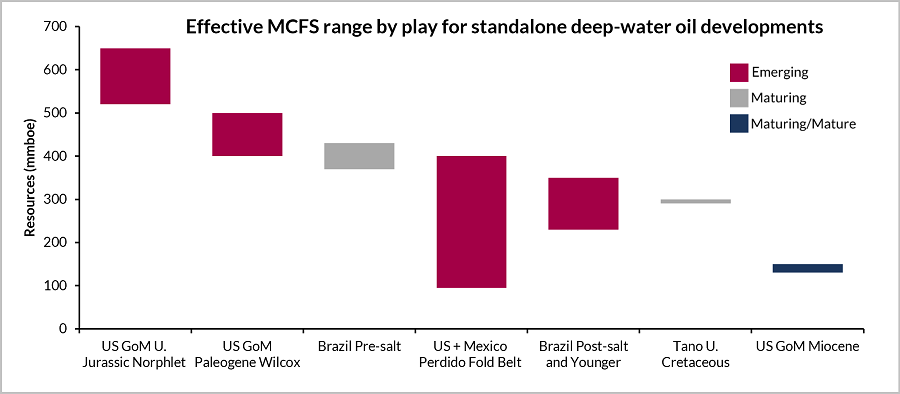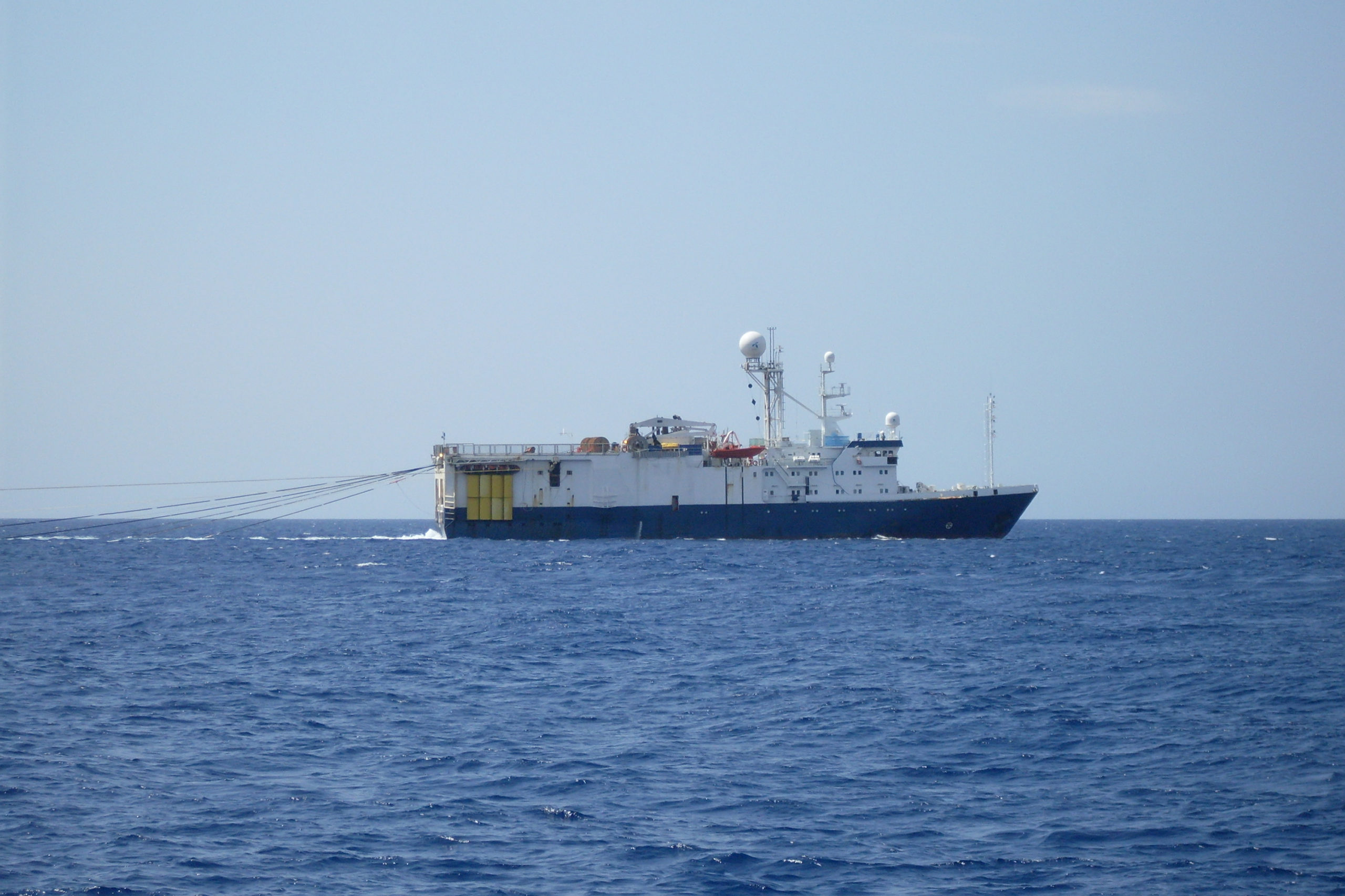The minimum commercial field size (MCFS) for deepwater standalone oil developments since 2007 has been found to vary between 130 and 650 mmboe depending, principally, on the exploration play. The oil price was not found to have had a significant impact on the MCFS as costs and development designs have adjusted to lower prices. The MCFS decreases and the range in MCFS narrows as a play becomes more mature as additional infrastructure is put in place and technology matures.
Accurate estimation of the MCFS is vital in order to determine the chance of commercial success and to carry out economic assessments of exploration prospects prior to making a decision to drill. Typically, the MCFS is defined by a single number through economic modelling, however Westwood has shown that in frontier and emerging plays especially, there is a wide range between the smallest commercial field and the largest non-commercial discovery. In our latest report, Westwood has used its Wildcat Exploration and Appraisal modules to estimate the effective MCFS for standalone deepwater oil developments in Brazil, the US and Mexican Gulf of Mexico and Ghana.
The MCFS is predominantly a function of the geological play. In Brazil the range of effective MCFS for the post-salt Albian and younger plays was found to be between 230 – 350 mmboe, whilst, the MCFS for pre-salt reservoirs was approximately 100 mmboe greater, reflecting the increased development challenges.
The Upper Cretaceous turbidite play of the deep-water Tano basin in Ghana was found to have an estimated effective MCFS for a standalone development of 300 mmboe In the Gulf of Mexico, standalone projects were found to have an effective MCFS range of 130-150 mmboe for the Miocene play, whilst the emerging Norphlet and Wilcox plays had an effective MCFS range of 400-500 mmboe and 520-650 mmboe respectively. The high MCFS of the Wilcox and Norphlet plays is due primarily to ultra HPHT reservoir conditions.

Source: Westwood Analyis
Westwood has shown how analogue derived estimates of minimum commercial field size can help calibrate modelled estimates for MCFS in prospect evaluation. Outside the US Gulf of Mexico the minimum size for commercial, standalone deepwater developments was found to be well over 200 million barrels, a point to ponder for explorers.
Joe Killen, Analyst, Global Exploration & Production
[email protected] or +44 (0)20 3794 5387




